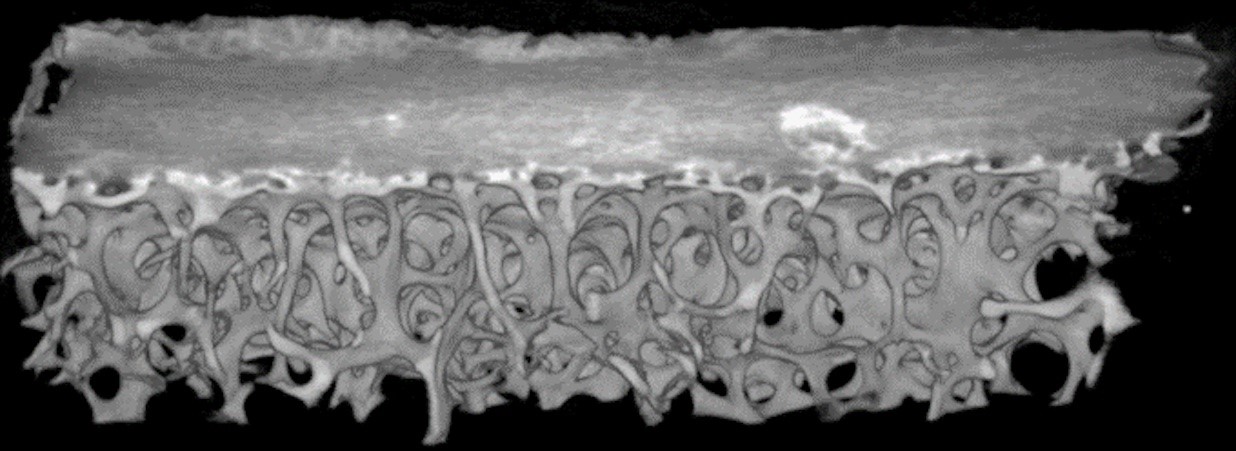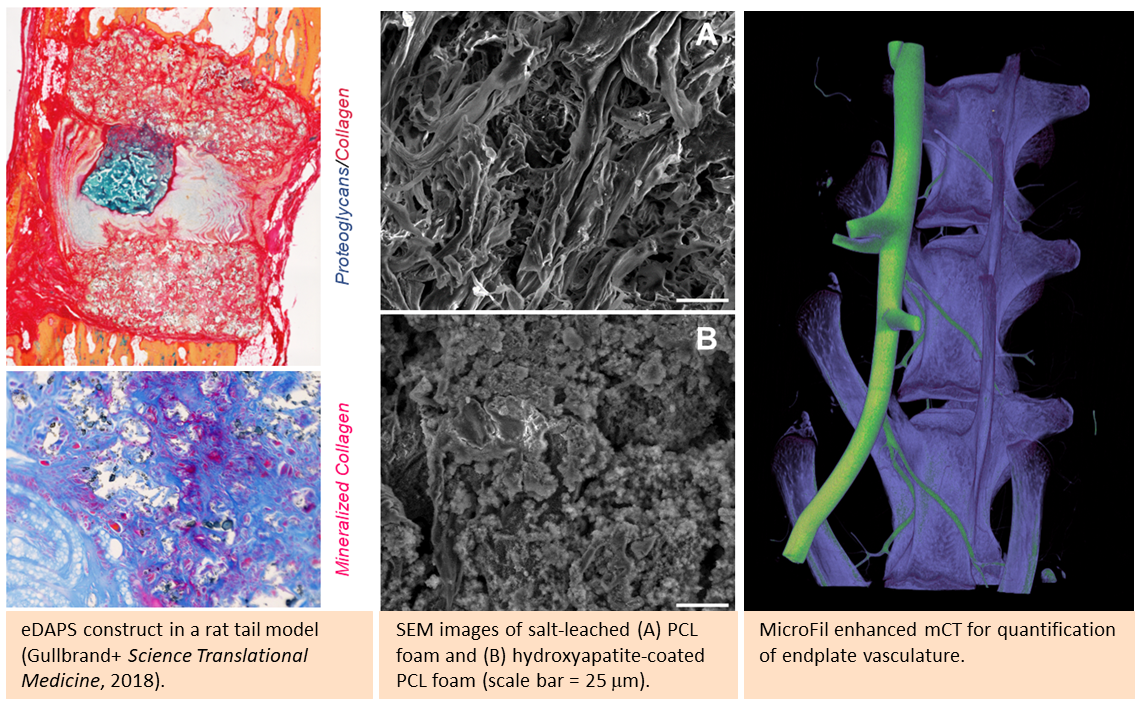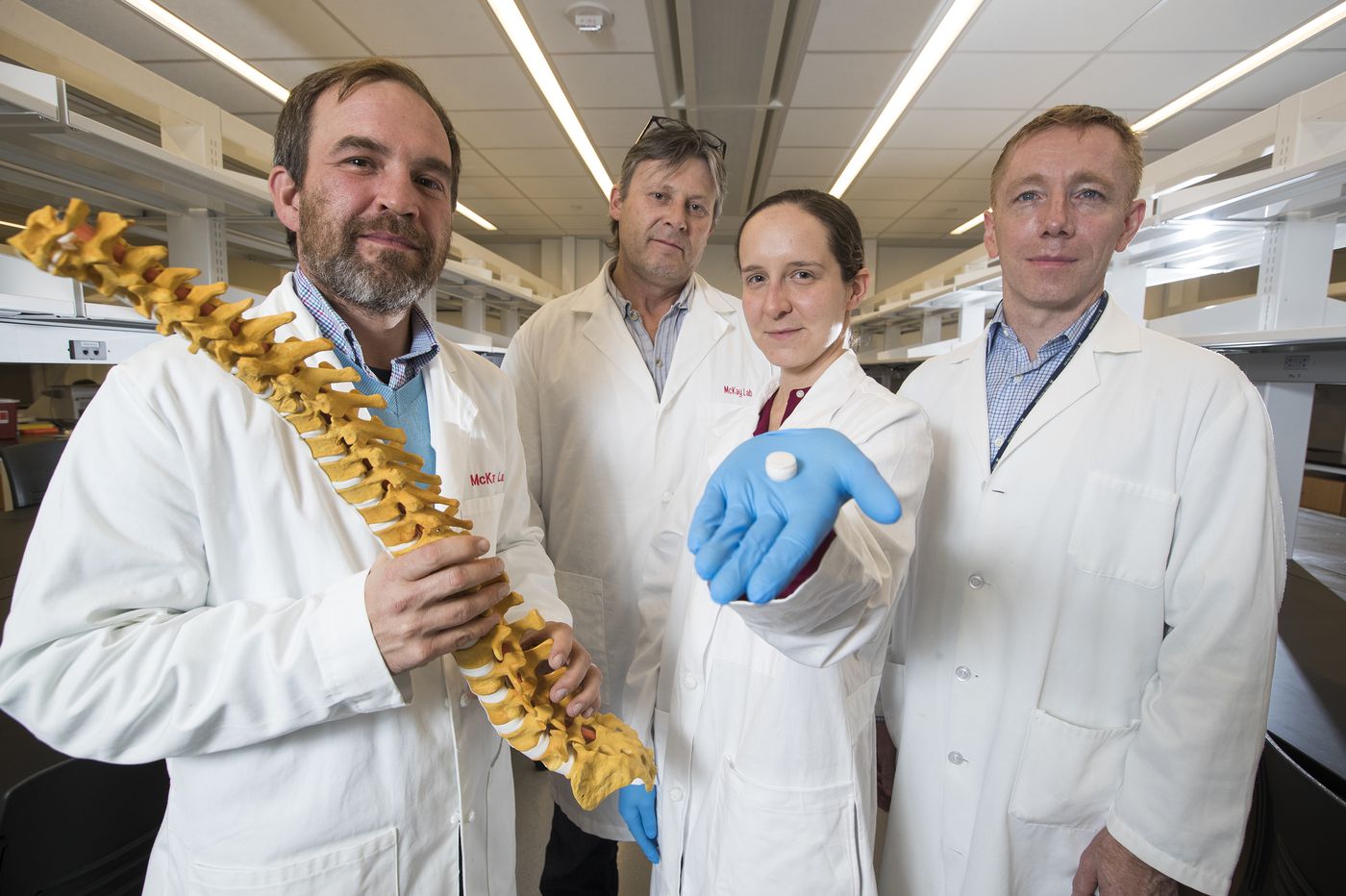Strategies for Intervertebral Disc Regeneration and Repair
Disc Herniation Repair
Intervertebral disc herniations affect 2 to 3% of the world population and, when severe, result in persistent pain and disability. For patients requiring microdiscectomy surgery, there are no clinically available treatments to repair the defect, resulting in increased incidence of reherniation and progressive disc degeneration. Our group is currently interested in developing and translating scaffold and hydrogel-based annular repair devices which provide a physical barrier to reherniation while delivering biofactors which can engage endogenous repair.

Therapeutic Spinal Loading
Despite the critical role of trans-endplate transport (the transport of nutrients/waste products across the vertebral endplate) in disc homeostasis, its association with disc degeneration and regeneration remain severely understudied. To date, augmenting trans-endplate transport as a therapeutic strategy for disc regeneration remains largely unexplored compared to traditional tissue engineering or regenerative medicine approaches. Our work in this area will explore exercise as a method of therapeutic spinal loading to determine how compromised trans-endplate transport impacts the extent to which therapeutic spinal loading can induce disc regeneration.

Intervertebral Disc Tissue Engineering
Low back pain, most commonly caused by degeneration of the intervertebral discs, places a significant social and economic burden on the general public. Current clinical treatments for disc degeneration, including spinal fusion, are limited in that they do not restore healthy disc structure or function. To overcome this limitation, our group has been developing a whole, tissue-engineered total disc replacement. This living biomaterial, referred to as an endplate-modified disc-like angle ply structure (eDAPS), is composed of three regions (an engineered annulus fibrosus, nucleus pulposus, and endplate replacement) that recapitulate the structure of the native disc, aiming to restore disc function upon implantation into a degenerative environment. Components of this work include:
- Fostering the development of a robust vascularized boney interface between the implanted eDAPS and the vertebral bodies
- Assessing the use of different cell types and cell sources on the maturation and function of eDAPS
- Evaluating the long-term function of the eDAPS when subjected to physiologic loading in our large animal model

Selected Press
- Philadelphia Inquirer February 26, 2019

- Science Magazine November 21, 2018
Current Grants
- VA RR&D Merit - I01 RX002274 - Tissue engineered total disc replacement in a large animal model
- VA RR&D Merit - I01 RX005006 - Predicting the efficacy of therapeutic spinal loading for intervertebral disc regeneration
- NIH R01 - R01AR083007 - Disc-facet crosstalk during spinal degeneration and repair
- NIH R01 - R01AR085626 - Accelerating AF repair with a multi-factor mechanoactive patch
